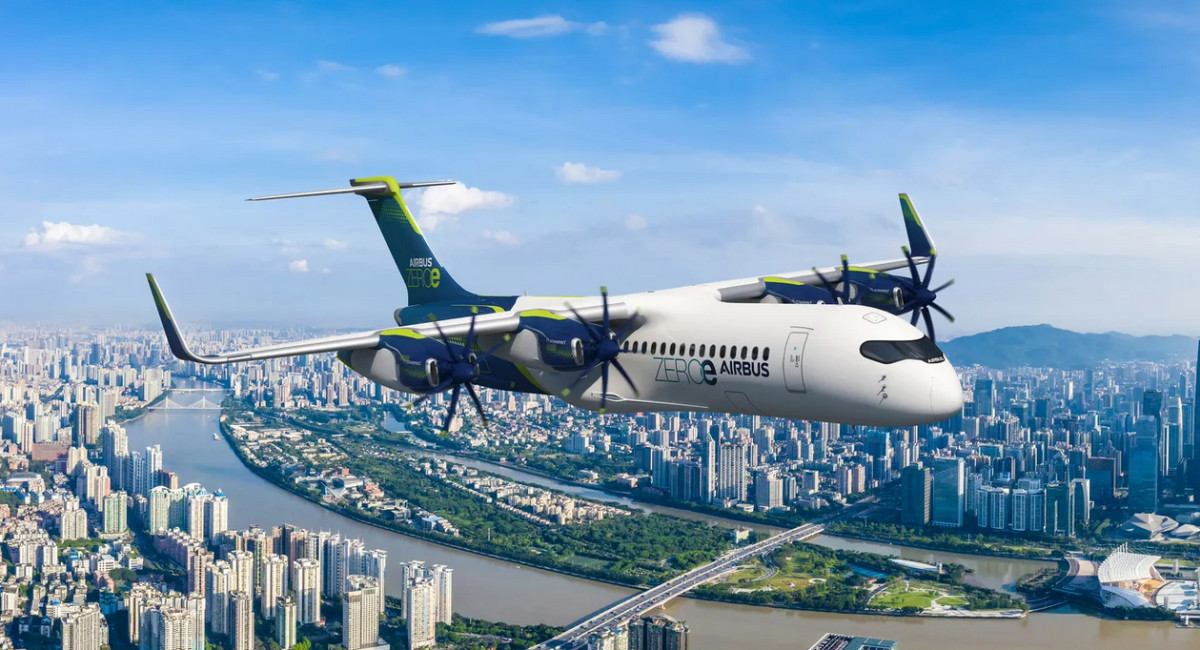The most intriguing innovation – at least in the outside – is the engines, which are located as external pods on the wings of the aircraft, similar to the premillary engines that were common in the promotional era. However, this is not a mechanical, but in a completely different, quiet technology, without combustion, and with a particularly high energetic efficiency.
Proflor is a mechanical impulse – the rapidly rooted flavors, which are connected to a piston or turbine, and their job is to push the air back and produce urge forward. For many years, passenger aircraft and fighter jets have been operated with this technology-mainly until the 1960s, so jet engines began to replace them. The propose was visible, noisy, and with speed restrictions.
Airbus’s new aircraft has four external engines with blades – which can look like a proprietor – but in practice, these are full electrical propulsion systems that receive their energy from fuel cells that perform hydrogen oxidative response to oxygen to create electricity. No combustion, no fossil fuels, and no polluting emission.
The concept presented is based on two major liquid hydrogen containers, which feed four separate fuel cells. Each fuel cell generates electricity for an independent engine, and together they drive the aircraft quietly, clean and effectively. The entire system is supposed to reach an 8-megaphop-powerful power to operate a medium to medium-term passenger aircraft.
Airbus reports that this technology is currently in intense stages. In 2023, the company was able to operate a 1.2-megapped propulsion system, and in 2024 completed integrative experiments that included fuel cell systems, converters, chalks, heat exchangers and electric motors.
At the same time, a ground trial system has been developed to use a liquid hydrogen named LH2BB in collaboration with Air Liquide, which allows to check the system safety and its transmission system before actual flight.
Apart from the technological aspects, Airbus emphasizes that the development of appropriate hydrogen air conditioning regulatory frameworks. The company simultaneously promotes the issue with international bodies and aviation, to prepare the infrastructure and frameworks that will enable such aircraft to enter commercial service.
According to Airbus’s forecast, the new aircraft may enter commercial service in the late 1930s, as part of the expected alternative to current single-reun models-like the A320. The technology is designed to complete, and not replace, the sustainable fuel solutions (SAF), and is expected to be mainly effective in short and medium lines.
